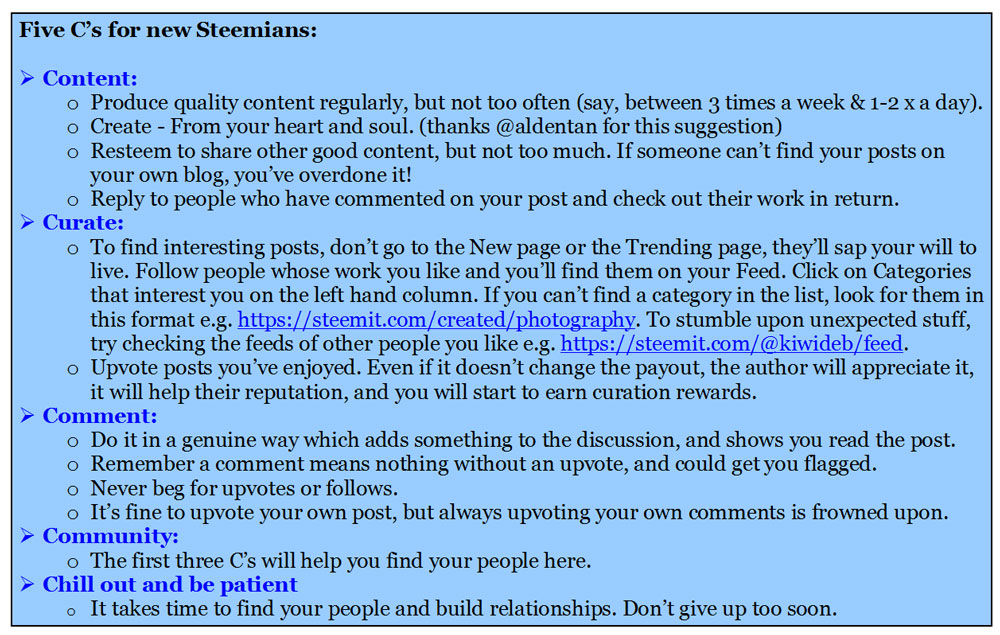Keto & fasting 3 – Introduction to meal spacing and fasting
More on what I learnt about health, weight loss and longevity in the Real Skinny on Fat online summit.
I’m aiming to summarise 30+ hours of videos and many pages of notes into a series of posts that are simple to understand.
Post 1 was about how we were made to fear dietary fat, why we don’t need to, and why that was disastrous.
Post 2 was about metabolic flexibility and how that ties in with ancestral eating (whatever that means to you).
Today I want to talk about the importance of not eating continually, and how we can benefit from even a short break in eating.

The original plan was to cover all the different types of fasting today, but it soon became clear that was going to be way too much – so we’ll just start with the easiest first step
Time Restricted Eating
Sometimes this is referred to as Intermittent Fasting (IF) but that is really something a little different that we’ll talk about later. Time Restricted Feeding (TRF) is more accurate, though I don’t like the term. I just say Meal Spacing, and I’ve also heard it called Eating Window.
If you see a reference to, say, 18/6 TRF, that means 18 hours fasting, 6 hours eating. But we’re going to start a bit easier by talking about 12/12 – fasting overnight for 12 hours, then eating within a 12 hour window,
Think for a moment about the word Breakfast – it doesn’t mean a meal you have to eat as soon as you can after getting up, it literally means the meal with which you break your overnight fast. For it to qualify as a true fast, we really need to have refrained from stuffing our face for at least 24-36 hours. So we’re being a bit liberal calling 12 hours a fast, but that’s fine for now.
No judgement here though. I’m as guilty as the next person of eating more food than I need, more often than I need it. I was as brainwashed as everybody else about how we need to eat early in the day to kick-start metabolism.
But in actual fact, it takes at least 8 hours for food to move through the digestive tract, and 12 hours or more for it be fully processed. We might think we’re hungry after 10 hours, but our last meal is still being utilised.
When we eat 4 to 6 small meals a day, we never get out of growth mode, but we’re adults and shouldn’t be growing!
So, even if you’re already healthy, fasting for at least 12 hours overnight will give your digestive system time to complete its work and draw breath before the next onslaught. We will also get out of “growth mode”. At about the 12 hour mark, your body will start looking for more food. We want to teach it to access its own “backup tank” – your body fat – especially if you’re overweight.

The next thing to think about is…
Spacing Meals within the Eating Window
You want to allow each meal to move from your stomach to your small intestine before adding more food. Would you add more dirty washing to the washing machine when it’s almost done? Same principle. It takes at least 3 hours for food to process in the stomach, more if you don’t produce much hydrochloric acid, and eat lots of protein.
Ideally you would eat three meals a day, spaced about 5 hours apart. That might be breakfast at 8am, lunch at 1.30pm and dinner at 7pm. Though if you’re eating a high carb diet and used to having to graze all day, you might need to start with four.
Summarising what we’ve learnt so far
In Post 1 the lesson is – don’t be frightened of dietary fat, we need it!
In Post 2 the lesson is – our ancestors were metabolically flexible and going for periods of time without food was quite normal
In this post, the lesson is – having plenty of space between meals is good for our digestive system, and our waistlines!
How can we apply this?
Let’s work together on three goals. But before I tell you what they are, I want to stress three things.
• We are NOT reducing calories at this stage
• Don’t rush into it – take it slow, step by step
• If you are a diabetic, have another metabolic or chronic illness, or are on medications - get professional help from your doctor, naturopath or nutrition expert

Goal 1 = Fast overnight for 12 hours
Start where you’re at now. If you’re a midnight snacker, stop that first. Then increase the amount of time between dinner and breakfast by 10-30 minutes a day. You can go hungry for an extra 15 minutes. We’ve already established it’s not going to kill you. (Unless you have a metabolic illness, then you already know you need extra care and help.)
If you already fast for 12 hours overnight, go to the next level and head towards 15 hours.
Goal 2 = Only three meals a day
Breakfast, lunch, dinner, and no snacks. Sound simple? Go, you.
But if it’s too difficult, start with 4 meals a day. As we work on goal 3, it will become easier to space your meals a bit better.
Goal 3 = Increase the % of calories of good fats you’re eating
The first thing you’ll need to do is figure out what your current level of protein, fat and carb intake is. If you don’t already have a good idea, sign up with FitDay or a similar calorie counter website and enter your meals for a day. You might be surprised, or even shocked.
To be ketogenic, your ratios need to be something like protein 20%, fat 70%, carbs 10% but we’re not aiming for that right now. Let’s just aim for protein 30%, fat 40%, carbs 30%. Even that might take you a wee while, so don’t panic if you’re way off.
For a summary of good fats to start eating more off, go here.
Where are you at right now?
If you want to make some changes, with moral support from others reading this post, feel free to share your starting point. Nothing personal like how much you weigh or what illnesses you have. Just three things:
• How long do you fast overnight right now?
• How many times a day do you eat (and be honest)?
• What is your current protein / fat / carb ratio?
I’ll start the ball rolling:
• Usually 12-13 hours
• I intend to eat three times a day, but in practice I don’t usually stop and eat a proper lunch, so often graze throughout the late afternoon, early evening (so here’s where I need to do the work)
• I’m currently around protein 30%, fat 40%, carbs 30%
My goal is to be fully ketogenic by the start of October, and do my third water fast later that month.
@sift666 has also answered the questions (well, actually I’m answering for him):
• Usually 10-11 hours (so this could be extended a bit)
• He’s a bit better at eating lunch than me, but sometimes needs a late afternoon snack. Though, since he implemented some changes that I’ll talk about in the next post, that has already radically changed. Yesterday he had breakfast, an early dinner and a very small supper.
• Since those changes, he’s currently around protein 25%, fat 50%, carbs 25%
His goal is to be fully ketogenic as soon as possible, maybe within a couple of weeks, and stay there for three weeks. Then he will review and decide what level of keto diet is his best maintenance level.
The remarkable thing about his progress so far is that he isn’t usually a very good fat burner. Tune in next time to see how we’re changing that.
Thanks for reading
Images from Pixabay.
Check out @woman-onthe-wing’s #makeithealthy project and the new #naturalmedicine project.


I don't believe in breakfast! It's just coffee for me (and cigarettes, but that's another story). Even worse, my children don't get any breakfast... as we tend to sleep late our first meal is lunch! Sometimes I do give in and have a little snack in late afternoon and then a late dinner.
Personally, I have no problem with a 12 hours night fast, even more...
What I'm still working on is the keto part - for weight loss reasons... some days I survive on meats and salad, but still, being a mother, I need to cook 'real' food from time to time...
I think keto is a whole jump away from just low carb. When you increase the fats, and don't have too much protein as well as not too much carbs, the whole chemistry of it is different. Hopefully the discussion in the next post will be helpful. But I am inclined to think people have different needs for protein, especially animal protein, and dependent on age too. After a few days of higher fat, last night my need for animal protein was such that I ate a whole half chicken through the evening!
Thanks for the good explanation of this theory of eating @kiwideb. I read about it a lot in my weight loss groups, but really have not paid too much attention.
My fat people will try anything except balanced meals! I'm still at the level of trying to get them to stop eating poison - whenever they do eat. I urge the avoidance of colors, flavors, gmos, pesticides etc. The addictive draw of Cheetos and Dr Pepper down me out a lot, unfortunately.
I get the dirty laundry idea for sure. That is a good analogy I will use.
After I lost my weight, I got into the habit of eating when I am hungry. Or maybe that started as I was losing weight. I never knew this feeling until just a few years ago. Since my food is generally healthy and balanced now, when I do eat I feel fulfilled. Then I do not need to eat again until I am hungry again. This has worked out to eating 1-3 times a day and usually it's once a day. I never eat when I get up, and I sometimes eat and then go to sleep, especially if I eat carbs.
Every once in a while, I can't sleep, and I realize it's because I am hungry! I get up and eat something and then I go to sleep.
And then sometimes I eat and eat for a couple of days. I try my best to supercharge the nutrition when that happens. I figure my body is telling me something and so I try to respond is a good way.
Sometimes when I am working, I realize I'm starving. I'll think back to wonder if I ate yet today.
These new hunger effects are so surprising. Back when I was obese, I ate constantly, and was always hungry right after meals even though I was full. I call this "stuffed yet starving" and I believe it is because we eat "food" with no nutrition. Once I started to get nutrition in my food, I did not have to eat all the time. I lost "half my size" and I began to actually enjoy eating.
Thank you again for all of your support lately. I really appreciate your help so much more than you know.
I've often thought keto sounded a bit extreme, though helpful for certain conditions. And if we were metabolically flexible, we wouldn't need to follow such a rigid pattern. Once we get some level of health back, I imagine you can go in and out of ketosis at different times and your body would be able to adapt.
But fasting has much more history, so spacing our meals a bit better makes so much sense to me. And like you say, once you start to actually recognise true hunger, and eating more appropriately, then you naturally fall into a rhythm of eating less often.
I used to do a presentation I called Overfed and Undernourished. Stuffed yet Starving is a neater way of saying the same thing.
You're welcome, re the support. I hope things work out for you both. So far, with the very zen attitude of trusting that you will be provided for, that has happened. So fingers crossed that continues.
Now I want to graze on chocolate :)
You'll have to make do with the fudge I made from ground macadamias, melted dark chocolate and MCT oil. And for those of you wondering what that is, tune in tomorrow...
You just got a Team NZ upvote!

This is a curation bot for TeamNZ. Please join our AUS/NZ community on Discord.
Why join discord room? Here are 10 reasons why.<
Enjoying the bump? Please consider supporting your fellow Kiwis with a delegation. How? Read here.
For any inquiries/issues about the bot please contact @cryptonik.
wow mam you nailed awesome article 😍😍
Although I am usually a fan of jumping in with both feet and no safety net, it's also nice to have a clear cut, step-by-step plan. Good job!
La dieta ceto es un régimen dietético para perder peso. El principio fundamental de esta dieta es el consumo de alimentos con una cantidad mínima de hidratos de carbono. Esta dieta ayuda a reducir los niveles de azúcar en sangre y conduce a la pérdida de peso al cambiar el metabolismo. La dieta ceto favorece la formación de cuerpos cetónicos en el organismo, provocando un estado denominado cetosis. Con el ejercicio activo, la lipólisis comienza después de 2-3 días de la dieta, mientras que con un estilo de vida pasivo comienza en el 7º-9º día. Pero aparte del objetivo de perder peso, tenía otro de prevenir los dolores articulares. Y lo hice gracias al sitio web https://preciocpa.es/arthro-lab/ y, más concretamente, a Arthro Lab, que me ha sido de gran utilidad.